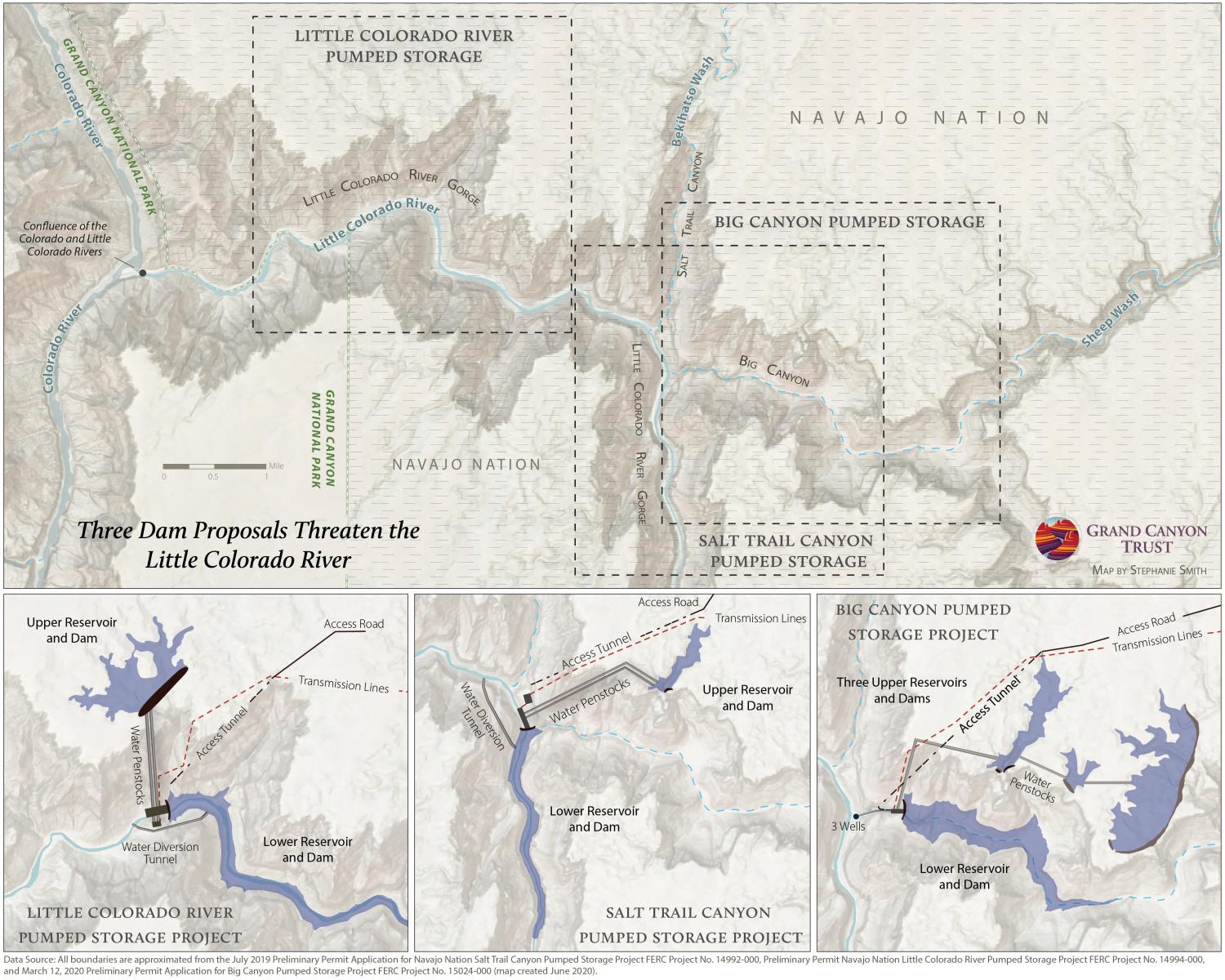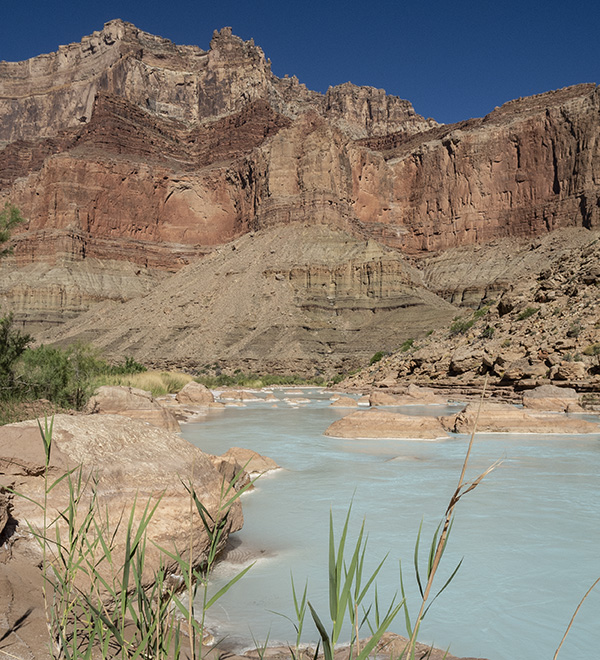
After years of advocacy by Native communities, tribes, the Grand Canyon Trust, and others, in 2022, the federal government cancelled preliminary permits it had issued to a Phoenix-based company for two proposed hydroelectric projects on Navajo Nation lands mere miles from the national park boundary. Both would have flooded a pristine section of the Little Colorado River Gorge, muddied its distinctive turquoise-blue waters, destroyed areas sacred to Native peoples, and threatened the habitat of the already endangered humpback chub.
In April 2024, following a new federal policy requiring tribal consent for dams on tribal lands, the government denied the company's third application to dam Big Canyon, a nearby tributary canyon adjacent to the Little Colorado River.
STATUS: Canceled
This proposal was less than five miles from Grand Canyon National Park and included two dams, one across a canyon east of the Little Colorado River and another on the Little Colorado River itself. Details ›
STATUS: Canceled
Less than a half mile from Grand Canyon National Park, this project included two dams. It appeared that the project's lower reservoir would leave a Hopi sacred site underwater. Read more ›
Also on Navajo Nation land near the confluence of the Colorado and Little Colorado rivers, this proposal included four dams on and above Big Canyon, a tributary to the Little Colorado River. Learn more ›
In February 2024, the Federal Energy Regulatory Commission (FERC) announced it will not issue preliminary permits for projects on tribal lands, "if the tribe on whose lands the project is to be located opposes the project." See a list of FERC permit denials for hydropower projects on tribal lands ›

The confluence of the Colorado and Little Colorado rivers is culturally significant to many Native peoples in the region and awe-inspiring to all. These proposed dam projects, like the not-so-distant failed Escalade tramway, threatened to disrupt the spiritual and cultural practices of people who have called the Grand Canyon home since time immemorial. One of the projects (the Little Colorado River Pumped Storage Project), would have flooded a Hopi sacred site, a place where the Hopi people believe they emerged into this world.
"This whole region … is culturally important. There are various shrines located in this area that Hopi people still visit to this day.” — Lyle Balenquah
Fly over the Little Colorado River as Lyle Balenquah — archaeologist, river and hiking guide, and member of the Hopi Tribe — and William LongReed — citizen of the Navajo Nation Bodaway/Gap Chapter — explain the cultural and spiritual significance of the area.
The Federal Energy Regulatory Commission (FERC) cancelled the preliminary permits for the Salt Trail Canyon and Little Colorado River projects in December 2022 after the developer asked to surrender those permits.
In April 2024, FERC denied the proposed Big Canyon Dam, citing the Navajo Nation's opposition.

If built, these dams on the Little Colorado River would:

From mines, to tourist developments, to proposed dams, profiteers have been trying to make a buck off the canyon since the 1800s. The company behind these proposed hydroelectric projects claims they'd be an economic boon to Navajo and Arizona economies, bringing billions in investment to stimulate jobs and growth. But the Navajo Nation, on whose lands the projects would be built, and other tribes with cultural ties to the area, strongly oppose the dams.
Settle in to see one of the most awe-inspiring landscapes in the world transform under an expansive, colorful sky.
Read MoreAnswers to your most pressing Grand Canyon geology questions.
Read MoreDid you know the Colorado River used to be called the Grand River? Learn about the name change and more fun facts about this hardworking river.
Read More